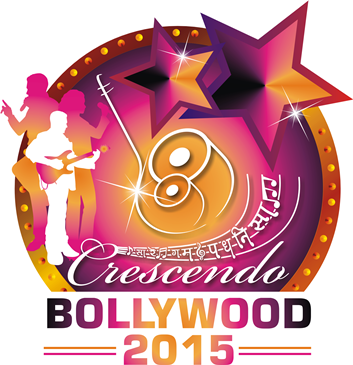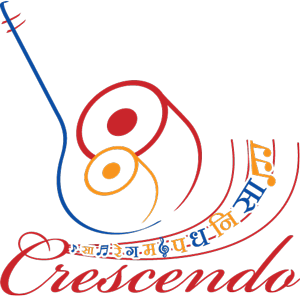In Hindustani classical music, each raag is rendered only at a specific time. The time of the raag depends on the
vaadi swar and the anuvadi swars . This is so as each raag with it's particular swar is more effective if performed
at a particular time. It is supposed to enhance the ras (mood) of the raag that the artist is responsible for evoking.
But, some raags are seasonal in nature. For example raags that belong to the Malhar category can be sung at any time
during the monsoon season. The traditional associations with respect to the season are - Monsoon - Raag Megh,
Autumn - Raag Bhairav, Winter - Raag Malkauns, Spring - Raag Hindol.
The 24 hours of a day are divided into 2 parts
- From 12 AM to 12 PM - This is called Poorva Bhaag and raags sung in this period are called poorva raags.
- From 12 PM to 12 AM - This is called Uttar Bhaag and the raags in this period are called uttar raags.
The part of the saptak (octave) from Sa to Ma (Sa Re Ga Ma) is called poorvang (earlier part) of a raag and from
Ma to taar saptak Sa (Pa Dha Ni Sa) is called uttarang (later part) of the raag.
Poorvang Vaadi raag : The raags in which the vaadi swar lies in the poorvang are called poorvang vaadi raag.
These raags are rendered in the poorva bhag of the day i.e. 12 AM to 12 PM
Uttarang Vaadi raag : The raags in which the vaadi swar lies in the uttarand are called uttarangi vaadi raag.
These raags are sung in the uttar bhaag of the day i.e. 12 PM to 12 AM
So if we know a vaadi swar of the raag we can estimate the time the raag will be rendered. The raags in Hindustani
classical music are divided in to 3 categories taking into account their swar (notes) and samay(time)
1. Raags with Komal Rishabh and Komal Dhaivat
These raags are called sandhi prakash (dawn and dusk time) raags and fall into two categories
a : pratah kaalin sandhi prakash raag : raags sung at dawn
b : saayam kaalin sandhi prakash raag : raags sung at dusk
In sandhi prakash raags Madhyam plays very important role. Most of pratah kaalin sandhi prakash raags (dawn time)
contain the shuddha Madhyam. Eg. Raag Bhairav. Most of the sayam kaalin sanhdi prakash raags (dusk time) contain
teevra ma. Eg. Raag Marwa.
Also, in most of the sandhi prakash raags, Rishabh is komal and Gandhar, Nishad are shuddha. Dhaivat can be komal or
shuddha.
2. Raags with Shuddha Rishabh and Shuddha Dhaivat
The time at which these raags are rendered is after the sandhi prakash raags. They belong mainly to Kalyan,
Bilawal, Khamaj thaat.
After the pratah kaalin sandhi prakash raags the influence of shuddha Rishabh and shuddha Dhaivat starts rising.
Hence the raags of this category are rendered from morning 7.00 to morning 10.00 and from evening 7.00 to evening
10.00. In this category Gandhar is essentially shuddha.
In the morning 7.00 to 10.00 category Shuddha Madhyam is prominent Eg. Bilawal, Deskar
In evening 7.00 to 10.00 category Teevra Madhyam is prominent Eg. Yaman, Bhoopali
3. Raags with Komal Gandhar and Komal Nishad
These raags are sung after the Shuddha Rishabh and Shuddha Dhaivat raags. They are sung from morning 10.00 to afternoon 4.00
Eg. Asavari, Jaunpuri and night 10.00 to dawn 4.00 Eg. Bageshree, Jaijaivanti, Malkauns. In these raags Gandhar will surely be
komal. The Rishabh and Dhaivat can be Shuddha or Komal.
Importance of Madhyam with regards to the time of the raag.
Normally , in the morning time raags shuddha Madhyam is prominent. In the raags with Komal Rishabh and Komal Dhaivat
if shuddha Madhyam is prominent then they are called Pratah Kaalin Sandhi Prakash raag.
In the evening raags teevra Madhyam is prominent. Thus in the evening with the raags such as Poorvi, Shree,
Multaani, teevra Madhyam comes into use which goes on till the 2nd prahar of the night. At that time with raags
such as Bihaag, shuddha Madhyam starts getting prominent.
In the pratah kaalin sandhi prakash raag, the raags with the Shuddha Madhyam (Raag Bhairav, Kalingada)
come first followed by raags with both the Madhyams (Raag Ramkali, Lalit).
After this is the time to sing raags with Shuddha Rishaabh and Shuddha Dhaivat. Shuddha Madhyam is prominent in these
raags (Raag Bilawal)
Then comes the time for Komal Gandhar raags. In this both the Madhyams are used. In some of them Shuddha Madhyam
assumes prominence whereas in others Teevra Madhyam assumes prominence.
 |
 |
 |



